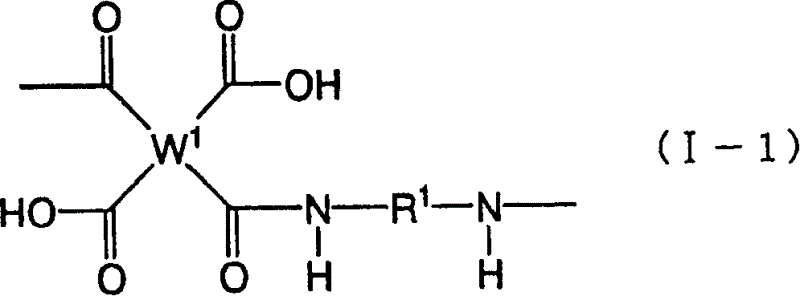Liquid crystal aligning agent and lateral field style liquid crystal display element
A technology of liquid crystal display element and liquid crystal aligning agent, which is applied in the direction of liquid crystal materials, chemical instruments and methods, instruments, etc., can solve problems such as insufficiency, and achieve the effects of high reliability, high display quality, and excellent electrical characteristics
- Summary
- Abstract
- Description
- Claims
- Application Information
AI Technical Summary
Problems solved by technology
Method used
Image
Examples
preparation example Construction
[0033]As the tetracarboxylic dianhydride used in the preparation of the polyamic acid polymer, the cyclobutane tetracarboxylic dianhydride represented by the above formula (III') preferably includes, for example, 1,2,3,4-cyclobutane tetracarboxylic acid dianhydride. Carboxylic acid dianhydride, 1,2-dimethyl-1,2,3,4-cyclobutane tetracarboxylic acid dianhydride, 1,2-diethyl-1,2,3,4-cyclobutane tetra Carboxylic dianhydride, 1,3-dimethyl-1,2,3,4-cyclobutane tetracarboxylic dianhydride, 1,3-diethyl-1,2,3,4-cyclobutane tetra Carboxylic acid dianhydride, 1,2,3,4-tetramethyl-1,2,3,4-cyclobutane tetracarboxylic acid dianhydride. In addition, examples of tetracarboxylic dianhydrides other than the above-mentioned cyclobutane tetracarboxylic dianhydride include butane tetracarboxylic dianhydride, 1,3-dichloro-1,2,3,4-cyclobutane Tetracarboxylic dianhydride, 1,2,3,4-cyclopentane tetracarboxylic dianhydride, 1,2,4,5-cyclohexane tetracarboxylic dianhydride, 3,3',4,4'- Dicyclohexyltetracarboxyli...
Synthetic example 1
[0110] Synthesis example 1 (synthesis of polyimide polymer)
[0111] Combine 22.1 g (0.1 mol) of 2,3,5-tricarboxycyclopentylacetic dianhydride as tetracarboxylic dianhydride and 19.8 g (0.1 mol) of 4,4'-diaminodiphenylmethane as a diamine compound Dissolved in 168g of N-methyl-2-pyrrolidone and reacted for 4 hours at 60°C. Then, the reaction solution was poured into a large excess of methanol to precipitate the reaction product, and then washed with methanol and passed under reduced pressure. After drying at 40°C for 15 hours, 29.3 g of polyamic acid with a logarithmic viscosity of 0.42dl / g was obtained. The obtained polyamic acid was dissolved in 550 g of N-methyl-2-pyrrolidone, and 39.5 g of pyridine and 30.6g of acetic anhydride was dehydrated and closed at 110°C for 4 hours. Precipitation, washing, and pressure reduction were carried out in the same manner as above, to obtain 21.5g of polyamide with a logarithmic viscosity of 0.64dl / g and an imidization rate of 92%. Imide (A-1...
Synthetic example 2
[0112] Synthesis Example 2 (Synthesis of Polyimide Polymer)
[0113] In Synthesis Example 1, except for using 10.8 g (0.1 mol) of p-phenylenediamine as the diamine compound, the same procedure as in Synthesis Example 1 was carried out to obtain polyamic acid. Then, using this, the imidization reaction was performed in the same manner as in Synthesis Example 1, and 24.9 g of polyimide (A-2) having a logarithmic viscosity of 0.77 dl / g and an imidization ratio of 93% was obtained.
PUM
| Property | Measurement | Unit |
|---|---|---|
| thickness | aaaaa | aaaaa |
Abstract
Description
Claims
Application Information
 Login to View More
Login to View More - R&D
- Intellectual Property
- Life Sciences
- Materials
- Tech Scout
- Unparalleled Data Quality
- Higher Quality Content
- 60% Fewer Hallucinations
Browse by: Latest US Patents, China's latest patents, Technical Efficacy Thesaurus, Application Domain, Technology Topic, Popular Technical Reports.
© 2025 PatSnap. All rights reserved.Legal|Privacy policy|Modern Slavery Act Transparency Statement|Sitemap|About US| Contact US: help@patsnap.com



